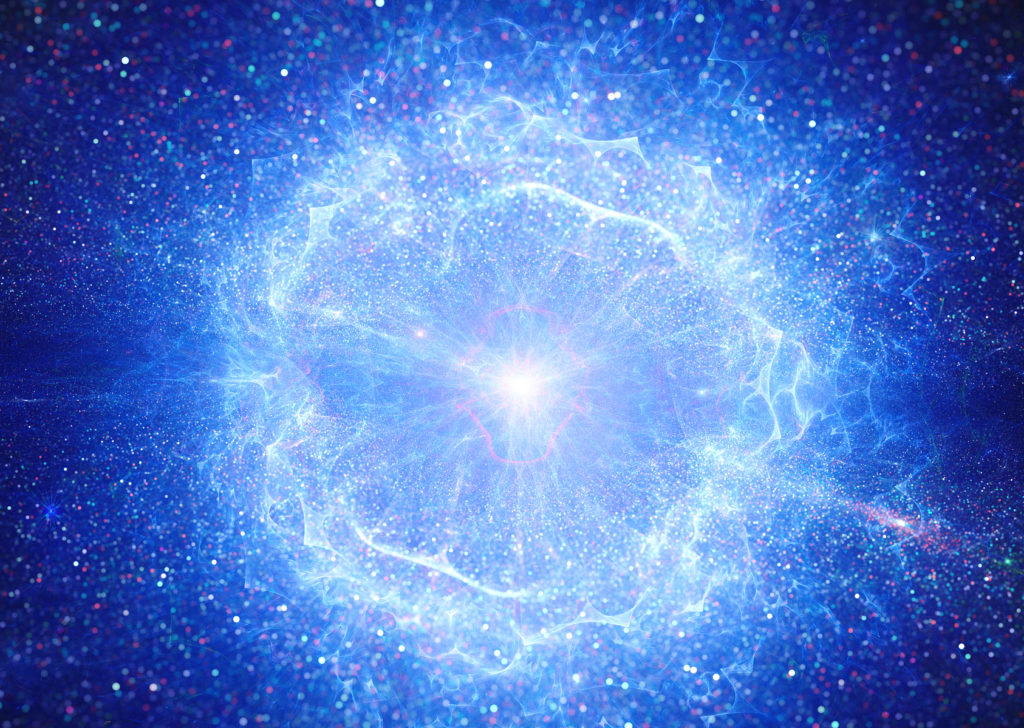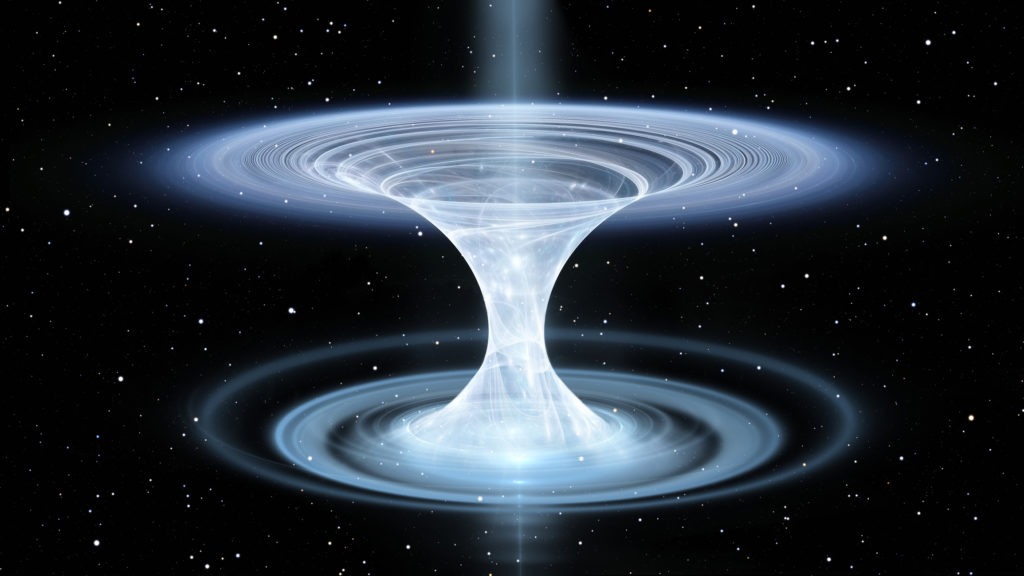BLACK HOLE B lack holes are some of the most interesting pathologies in space and time delivered by Einstein's general theory of relativity. They form when matter collapses gravitationally onto itself, such as when massive stars burn out. They are a region of space where the gravitational pull is so strong that nothing--not even light--can escape. Hence John Wheeler called them "black holes." There is more. They incorporate singularities in spacetime structure: points where Einstein's theory breaks down, since the curvature of spacetime becomes infinite. And they can supply bridges to new universes. S uch a star may become a white dwarf or a neutron star, but if the star is sufficiently massive then it may continue shrinking eventually to the size of a tiny atom, known as a gravitational singularity. A black hole refers to the region in space in which the singularity’s gravitational force is so strong that not even light can escape its pull. ...
- facts ...WHITE HOLES AND WORMHOLES
When Stephen Hawking proposed the idea that a black hole will eventually evaporate by leaking radiation from its event horizon, there was a problem. If it evaporates, what happens to all of the information it sucked in? If quantum theory is correct, this would defy a fundamental law that information cannot be lost – it’s called the no-hiding theorem.
With the no-hiding theorem, if information is missing from one system, then it must simply be residing somewhere else in the universe – a cosmic game of hide-and-seek. So theoretically, if information is getting sucked in, it must be getting spat back out somewhere, and likely that’s through a white hole. But is it really possible that white holes exist?
One way to conceptualize this in a very basic mathematical sense is to think about the square root of 9. The answer is both 3 and -3. This is fundamentally part of what’s known as Schwarzchild geometry, the formulae used in general relativity to describe the gravitational field outside a spherical mass.
Just like the color black is the opposite of white, the white hole is the opposite of a black hole in every way. Light cannot escape a black hole, so light cannot enter a white hole. This would obviously make a white hole incredibly bright, and some quantum physicists believe that maybe some of the light in the universe we thought was coming from supernovae, may actually be from white holes.

Physicists also believe this concept could be germane when talking about the big bang and how our universe came into existence. They believe it’s possible that at the moment of creation, everything was expelled from a massive white hole on an incredibly large scale.
The premise of white holes is based on a theory positing that space-time is made of granular building blocks that can be quantified. This quantification comes in the form of loops, almost like little threads that are of a finite size – so finite they cannot be subdivided any further. To a viewer these loops would be make space-time appear to be smooth and continuous, but their granular nature would prevent highly dense bodies like neutron stars from collapsing into a point of infinite density.
So, in the case of black holes, these incredibly finite loops would prevent a collapse into infinity, but eventually the loops would only be able to compress to a certain point, until they exert an outward pressure, almost like a spring. This is referred to as quantum bounce, a rebound from a black hole ingesting everything into a white hole expelling everything.
Many argue, however, that white holes are theoretically impossible because they violate the second law of thermodynamics, stating that entropy cannot decrease in a system. But it depends on how one looks at entropy, with some physicists saying it refers to disorder, while others say it refers to information used to describe a system, and an argument over semantics ensues.
WHITE HOLES AND WORMHOLES
So, if a black hole is sucking in all of this information and a white hole is spitting it out somewhere, mustn’t there be something connecting the two? A wormhole perhaps? Maybe.
The aforementioned Schwarzchild geometry necessitates a wormhole would connect a black hole and white hole with two separate universes connected at their horizons, also known as an Einstein-Rosen bridge.

Unforunately, these wormholes would be highly unstable if they were even possible. It would also be impossible, with physics as we know it, for one to pass through a wormhole into another universe (also theoretical) due to a number of pesky things like being spaghettified when passing through a black hole’s event horizon before being compressed at the singularity. Though you might at least get to see some distorted light from the parallel universe on the other side.
But since this is mostly theoretical, there are always theoretical solutions, like using exotic matter to stabilize a wormhole. Exotic matter has negative mass and positive surface pressure. This would keep the throat of the wormhole stable, while also preventing it from collapsing. This could hypothetically allow for travelers to pass through.
Will we ever figure out if wormholes exist and whether they can be used for time travel or inter-dimensional travel? Or have we already?
FIVE THINGS YOU DIDN’T KNOW ABOUT WHITE HOLES
- Scientists believe they may have witnessed a white hole when a sudden burst of white light appeared out of nowhere and then vanished. Unfortunately, there haven’t really been any other similar events recorded to study.
- In The Hitchhiker’s Guide to the Galaxy the people from the planet Magrathea create luxury planets for the galaxy’s richest people from the matter retrieved from white holes.
- Some have theorized that instead of a wormhole connecting two points in space, it could connect two points in time. This connection between a black hole and a white hole could potentially allow for time travel if one could stabilize said wormhole.
- White holes are essentially time-reversed black holes containing a singularity existing in the past.
- In the ‘70s, Stephen Hawking said black and white holes absorb and emit the same amount of radiation when they are in thermal equilibrium, making them indistinguishable. According to physicist Stephen Hsu, when a white hole is in isolation surrounded by empty vacuum space, it’s not in equilibrium, meaning it has nothing to absorb. This forces it to explode and release a large amount of thermal energy – what Hsu calls ‘quasithermal energy.

Univers❣️❤️💖
ReplyDelete